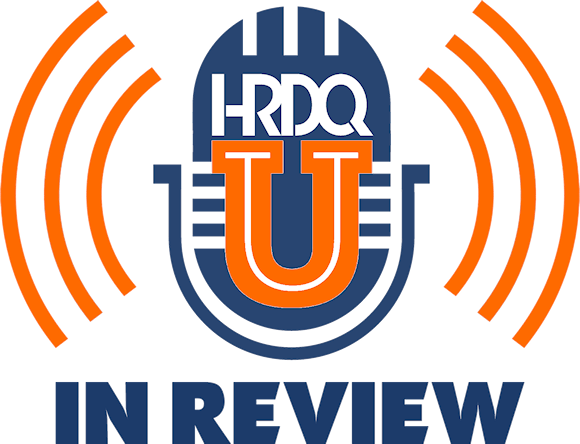

Dive into the world of active learning – participatory brain-based learning – with Susan Landay from Trainers Warehouse. Sue discusses key concepts of early-stage learning and applies those same principles that were so effective in our young brains when it wasn’t about listening to the history or science lecture but writing the dissertation or doing the lab work.
Explore the science behind active learning and uncover strategies to transform your content presentations into engaging experiences. Discover how to engage all five senses, expand your teaching methods, and facilitate effective learner absorption of new information. Get ready to elevate your training sessions and unlock the full potential of your learners in this dynamic episode.
00:04
Welcome to this week’s episode of the HRDQ-U In Review podcast, where we bring you the latest insights and practical tools for enhancing soft skills training in your organization. This podcast is brought to you by HRDQU.com, and I am your host, Sarah, Learning Events Manager at HRDQ-U. And today I have Sue Landay joining me to talk more about a recent webinar she presented with us,
00:34
Learning Without Lectures. So it’s a really great way of making a one hour webinar feel so much more relaxed and conversational. And I’m excited to jump more into that today with her. So thank you so much for joining me today, Sue. Happy to be here, Sarah. Thank you. So let’s, let’s kick things off before those as a recap for those that did join the webinar with us, as well as any newcomers that we have joining us today. Can you let us know a little bit?
01:00
little bit about who you are, what you do, your background, where you came from. Sure. So I’m the president of Trainers Warehouse. It was a company that my dad started, oh gosh, in the early 90s. And I joined him in the late 90s. So have been running the company for quite a long time. Prior to that,
01:24
I went to Yale, I went to Kellogg for business school, but I also went to Ringling Brothers Clown College. So I guess that’s kind of my little claim to fame. trying to like blend the fun and the professionalism. So it all makes sense now, but at the time I think people were a little surprised. It really does make sense with that, you know, what your business does and all the fun games and the way that you make learning fun. think.
01:51
It’s really interesting to see how that all brought you here. Absolutely. If only I’d known that like the stress after graduation and everything else, early career woes, but yeah, that’s where we are today. All makes sense. And I have a couple of questions that I like to ask all of my guests that join me before we get into the webinar specific content. So, you know, what changes do you see happening in the L &D space right now?
02:20
I feel like we this isn’t new, I should say, in that the move to online learning has been in the works and for for probably decades at this point. But I do think it was accelerated by the pandemic. And both then and now, I think it presents a challenge because
02:49
It’s clearly the less expensive option, but I think that people are still craving some of the face-to-face experiences that are great for communication, for leadership. And some of that can be done effectively online, but I think that there also needs to be some in person. think there’s going to be some, it’s continuing to evolve, I guess. Yeah.
03:18
And it’s so interesting because it really is true. Like when COVID hit, so many companies had to quickly pivot. And it is really cool to see how many of them had done so to adapt to the new environment that was kind of thrown at them so fast. are there any specific strategies or approaches that you believe that L &E professionals are adopting to address these challenges posed by this hybrid work?
03:47
to meet the needs of the employees in terms of skills and development and teamwork and relationship building? Yeah, I think that there are a lot of online tools that have been developed that are more closely emulating face-to-face experiences than what we saw 10 or 15 years ago or in the earlier days of online learning, where it was just kind of
04:16
on a charted course of not a PowerPoint, maybe it could take you in a lot of different directions. But I think that now we’re seeing a lot of tools developed that are team building games that people can use in Zoom rooms, in breakouts, and we’re figuring out ways for people to really interact as if they were live.
04:45
So I think that that’s what’s continuing to develop and is helping trainers and kind of bridge that gap. Yeah, absolutely. With technology and how fast it grows, Like this. And so let us know, what exciting things are you up to next?
05:11
So I’m always on a hunt for new products. So that’s kind of one of the things that we’re always looking for, whether that’s, you know, we have some new integrations between our buzzer systems so that you can play game shows and other kinds of games in class and software. So that’s been kind of exciting to see. We’re also
05:41
We have a couple of new thumb balls that just came out. Those are those conversation balls that people seem to love you. I know you guys resell those for us as well. Catch a ball and respond to the prompt under your thumb. And those are available for conversations about diversity, leadership, team dynamics, ethics, getting to know you.
06:08
Our two newest titles are Resilience, Developing Resilience and DEI. So, you always trying to stay on top of our game there. We also launched recently a show and share, which is instead of a webinar format, it’s more like a Zoom where people can connect with each other, but also learn about a specific.
06:36
product, how it’s used, they can share their stories with one another of it’s, you know, that product’s effectiveness and so forth. So we’re excited about that. It’s still a little bit developmental. And we also going back to kind of the conversation starters during the pandemic, we launched a tool called Trainers Exchange, which basically has all of the
07:06
prompts from all of the thumb balls and so much more content on there. And with people being remote and not able to toss a ball back and forth in that really fun way, we kind of created a fun game that uses all of those prompts and content, all of which are vetted with subject matter experts. And so we’d like to figure out how we can make that a norm.
07:33
for people where they have access to all of those great conversation starters. Yeah, that sounds like a really exciting lineup of initiatives that you have going on. And so now let’s reel it back into the webinar that we presented, Learning Without Lectures. For those that, as again, as a recap for those that joined us just as a refresher, as well as for anybody that’s listening in that didn’t attend the webinar, can you give us the key takeaways for registrants of that event?
08:01
Absolutely. So, you know, I think the first thing is just the reminder to be okay with being the guide on the side, not being the sage on the stage, not feeling like you have to have all the answers, but going in with a mindset that you’re helping your participants pull out the learning. You’re facilitating. You’re not telling.
08:29
And once you do that, you kind of open up a lot of possibilities to let them take charge of their learning experience. So then we talked a lot about using brain science principles, many of which came from Sharon Bowman, who had the book, Teaching from the Back of the Room, and to basically involve movement
08:58
letting the participants be the ones who talk, using images instead of words, writing instead of reading. We talked about keeping things different and continuing to kind of change it up and maintain people’s focus and keeping things brief. So those were kind of like the six brain principles that we talked about as well as
09:27
using those to increase participation and play and taking breaks. So, you know, standing up to stretch or whatever you need to do to just kind of get people focused, keep the blood moving, keep them engaged. So I think that’s my, you know, one hour webinar in one minute.
09:49
That was a great synopsis. And so we took the top comments and feedback from the webinar and condensed that into some questions here. So to share, so let’s, you know, it seems like you can share as much information through a lecture than by this means. You know, how can you go through all of the material that you have when it’s a hefty weighted topic, but you only have, you know, 15 minutes or so to get your point across? What are some tips that you have?
10:18
Yeah, I think that what this approach forces you to do and what embracing shorter over longer and involving them is that it really forces you to focus on the need to know information rather than the nice to know information. So you pare down and you focus on, know, if people aren’t going to remember half of,
10:47
90 % of what I say in a lecture anyway, what’s that 10 % that they really have to know? And let me focus on that. And I can tell stories about it, or I can include exercises. Having people involve themselves with the material, with images and games and everything else, that I think that it kind of forces you to do that.
11:16
And I don’t think you lose anything by stripping that out. So I guess that’s the first thing. And as far as if you’re focusing on a hefty topic, I think you have to think about whether that topic is just a difficult topic, something physics or science or a difficult topic conceptually.
11:46
versus whether it’s difficult in terms of, you know, like diversity or team dynamics, how are we working together, where you wanna make sure that you give people time to process, to think, to discuss. And I think that if you need more time and if you think that you can’t give something justice, I don’t think it’s about lecturing, but it might be about negotiating
12:16
with your supervisors or teams or your group about allocating more time so that you can properly address whatever topic you need to discuss adequately. But I also know that you can do a lot in a small amount of time. When I think about the TED Talks and the focus on 18 minutes, there’s a fellow, David Christian.
12:46
pardon me, who shared a talk on the history of the world, the history of the whole world in 18 minutes. I actually just watched it this week because it was fascinating. But I think that that’s the same concept of really focusing on what’s critical. What are the need to know bits of information? And is there like a specific strategy or technique that you always, you you have in your back pocket?
13:14
pocket that you’re ready to launch or employ to make key information more memorable or impactful when you are within a limited time constraint? I think that it really depends on what that content is. But I’m a big proponent of having people write things down themselves and articulate them themselves. So they should be the ones who are saying it.
13:44
explaining it, committing to whatever those next steps are. So it’s not that I’m gonna spend my time telling them. I want them to own that information. And so the question is, depending on what it is, how can we make that?
14:04
And a common theme that we saw throughout our webinar is people saying, you I worry that if I don’t have as much time to tell them, I’ll lose credibility. Do you have any comments that you can share on that? So I think that it’s a little bit counterintuitive. We do feel like we need to have have bits of wisdom to share. What’s counterintuitive about it is that the more that you acknowledge
14:34
that your learners are really smart and capable, they’re going to appreciate that you respect them and it’s gonna gain you credibility. And so I don’t think you need to have all of the answers. It’s funny, I remember my mom talking about, who was my business partner for many years, but in her early career, she was a teacher.
15:02
And she, like an elementary school teacher, and her kids would ask her science questions that she didn’t know the answers to. And that was, she just turned 85, so that was a long time ago. And she couldn’t say, hey, let’s Google it. So she would say, yeah, I don’t know, my husband’s a scientist, I’m gonna ask him. And so I think that having the sense of, you know, the,
15:33
self-confidence to be able to say, I don’t know, let’s figure it out together. I think that that does add credibility. don’t know, would you concur? Yeah, absolutely. think it says a lot when someone can say, hey, I don’t know everything and doesn’t need to act as though they do and that they’re always learning. Because we’re always learning new things every day. Even if you are an expert on something, there’s something new to learn, I believe.
16:01
It’s also like, um, Brené Brown in her studies in talking about vulnerability, and she asked people to think about a time when they felt like the most vulnerable and to then think about at that moment, if someone else were doing what you were doing, well, you can think of them as courageous or vulnerable.
16:27
And in her study, everyone said, oh my God, that’s so courageous. Like if somebody else, if this happened to someone else, I would think that they were amazing. And so it’s that same kind of thing. Like what we think about ourselves and our insecurities, our vulnerabilities, others perceive very differently. And I’m just kind of fascinated with all.
16:54
Absolutely. And I think we’re all, we’re all our worst critics too, you know, things that, everybody’s always thinking about, you know, what they did wrong or, know, whatever that may be, but really in reality, nobody’s really paying attention to those things necessarily. I have to say, I love there’s a, there’s a podcast called hidden brain. I don’t know if you’ve listened to it, but I’ve gone through periods of being just totally addicted to it because they have a lot of social scientists.
17:22
looking at things like this and this idea of being our own worst critic. I remember hearing a podcast about that too, so look that one up. Yeah, I’ll have to check that. I’ve never heard of that one, but I’m really intrigued as well. so when it comes to facilitating in a learning environment, where participants
17:48
are they already possess like a considerable amount of knowledge? You how would you go about effectively balancing, acknowledging their expertise while still providing, you know, value and maintaining your credibility as a facilitator? You know, I think that you’re helping them identify what they already know and prioritize their knowledge. And, you know, when we think about the idea that that
18:16
People who are talking are probably doing the most learning. If you have learners articulating what they know, it reinforces to them, it helps them prioritize as well what they know and it draws out that learning or it makes them question what they do and don’t know. But their act of articulating that helps build and deepen their own learning.
18:46
I don’t know if that really answered your question. Yeah, absolutely. the other thing that you talked about a lot, the topic that you talked about a lot during our webinar was about movement, which I think is really interesting. And I think it’s a really great way to engage your audience when you’re doing so virtually. what practices can be done during a virtual instructor-led training?
19:12
So I again have to hark back to an experience of a virtual course that I took with Sharon, but one of Sharon Bowman’s folks learning from the back of the room of a virtual edition. some of the things, you know, aside from taking a brain break to like really say, hey, everybody stand up, move around, twist, know, strike a yoga pose.
19:40
You know, they structured in like, write your top learning point on a Post-it note. Now I want you to stand up and walk to your refrigerator and stick it on the refrigerator. Go to the kitchen and get a glass of water or, you we need to take a break. Stand up, walk outside, take a photograph of whatever is outside your door or your window and then post it into our group chat.
20:09
There are ways that you can, you know, through breaks, get people moving or by asking them to write. Or even if you do use a tool like Miro or Mural or Zoom whiteboard and so forth, you can have people at least moving their moving, you know, sticky notes around the board and thinking of them at which.
20:38
isn’t as much physical movement, but still engages the mind a little bit differently. Yeah. And I’ll say, I host webinars every Wednesday. I’ve hosted hundreds of webinars. And every single time that during an event, if there is a movement activity or whether it’s like picking up your phone and sending a text message or…
21:03
getting up out of your seat or whatever that may be, it’s always so well received from the audience. They love it. It’s just, it’s something, it keeps your brain active and going. And when you’re there listening to someone talk for an hour, it’s nice to do something to be able to incorporate that into the session. Absolutely. And I have to say, I’ve even, know, at conferences where it’s not a training, but it’s more like people giving a lecture.
21:32
you know, or feeling like, you know, they need to talk and give a presentation for a while. I’ve typically interrupted myself about halfway through and said, okay, everybody, you know, stand up or introduce yourselves to someone behind you, like just kind of getting them out of their seats and not having to feel like they have to sit there respectfully for 45 minutes or whatever. Like it’s a long time.
21:59
It’s like a sigh of relief when they’re like, oh, I get to get up, I get to do something. Absolutely. And so before we close out today, Sue, let listeners know where can they go to learn more about your work? Thank you. Always you can visit our e-commerce site at Trainerswarehouse.com. We have a blog, blog.Trainerswarehouse.com, which has
22:28
tons of exercises and activities, whether you’re looking for communication, listening, active listening, time management, negotiation, any number of games, there’s information about brain science, there’s information about just kind of other facilitation tips that we’ve collected over the years. So all of that is at blog.trainerswarehouse.com.
22:57
And our conversation starter site that I talked about before is at exchange.trainerswarehouse.com. So lots of different sites. We’re also active on Pinterest and Facebook and LinkedIn. So actually our LinkedIn group is called Effective and Fun Training Techniques. And we’re close to 100,000 members now on LinkedIn. So that’s pretty cool. That’s really cool.
23:26
Yeah, make sure that you go back and check out all of those sites to connect with Sue and Trainers Warehouse. And thank you so much, Sue, for your time today. Thank you for having me. I appreciate it. It’s always good to talk to you, Sarah. Yes, it’s great chatting with you too. And thank you all for tuning into this week’s episode. We hope you enjoy listening to the HRDQ-U In Review podcast available on all major streaming platforms.
23:51
If you did enjoy today’s episode, make sure to give us a follow and leave us a review. I look forward to catching you all next time.


Listen to this podcast event at no charge with your
HRDQ-U Free Access Membership
Dive into the world of active learning – participatory brain-based learning – with Susan Landay from Trainers Warehouse. Sue discusses key concepts of early-stage learning and applies those same principles that were so effective in our young brains when it wasn’t about listening to the history or science lecture but writing the dissertation or doing the lab work.
Explore the science behind active learning and uncover strategies to transform your content presentations into engaging experiences. Discover how to engage all five senses, expand your teaching methods, and facilitate effective learner absorption of new information. Get ready to elevate your training sessions and unlock the full potential of your learners in this dynamic episode.
[ PODCAST PLAYBACK ]
You must be signed-in with your membership account to access this content.
Enjoyed this podcast? Have suggestions on how we can improve? Please take our quick survey and receive a coupon for 15% OFF any of our individual membership plans.
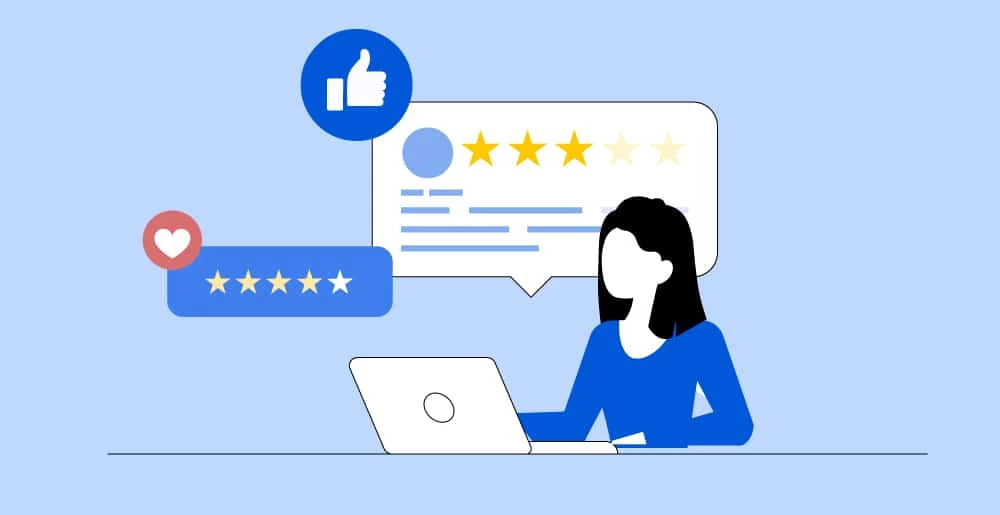
*Instant 15% coupon available upon completion of survey.
Want to learn more? Become an Individual or Corporate member to watch this and hundreds more webinars!
Understand the brain science that helps us understand why active learning is critical. Trainers Warehouse’s Susan Landay will tease out dozens of ways you can transform your content presentation into engaging, experiential experiences.
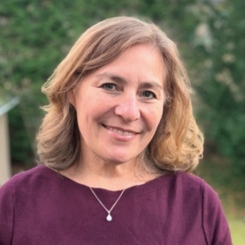
Susan Doctoroff Landay
Susan Doctoroff Landay is currently the President of Trainer’s Warehouse. She joined her father in 1997 in what was then a fledgling business. Prior to that, Sue spent two and half years consulting and training in the field of negotiation and another two years marketing a business history consulting company.
Susan graduated from Yale College (BA in 1986), the Kellogg Graduate School of Management at Northwestern University (MBA in 1992), and Ringling Bros. and Barnum & Bailey Clown College (MFA in 1987). Susan values blending humor and professionalism to enhance training.

Training Tools for Developing Great People Skills
This event is sponsored by HRDQ. For 45 years HRDQ has provided research-based, off-the-shelf soft-skills training resources for classroom, virtual, and online training. From assessments and workshops to experiential hands-on games, HRDQ helps organizations improve performance, increase job satisfaction, and more.
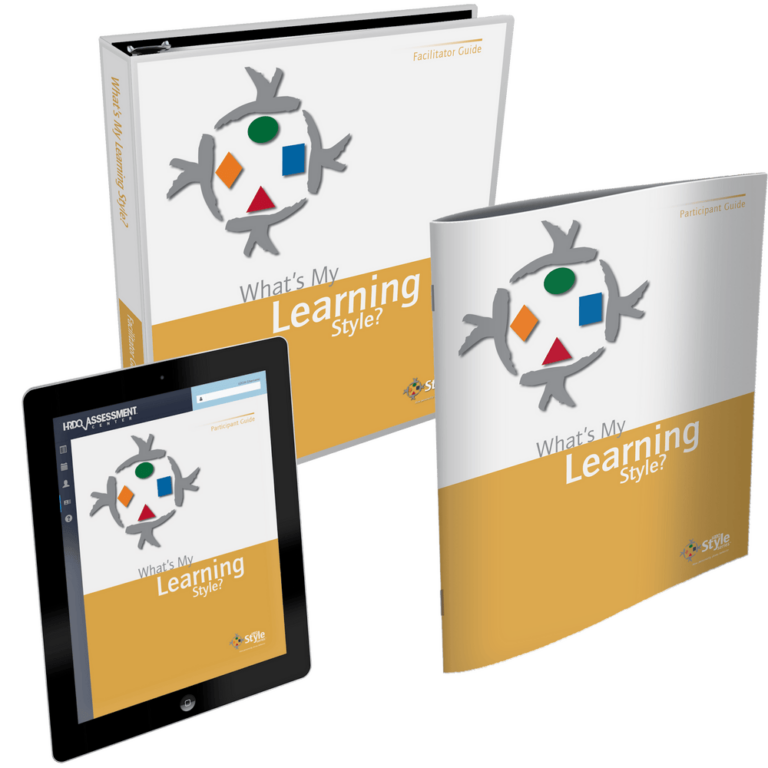
What's My Learning Style
Before implementing your next training program, it’s crucial to understand how your audience learns. This assessment helps maximize learning outcomes by identifying adult learning preferences and guiding individuals to leverage their strengths, address weaknesses, and adapt to different styles.
Buy at HRDQstore.com
Classroom Training 101 Customizable Courseware
Participants will be guided through the four dimensions of facilitation techniques, and they will learn how to make training engaging by tailoring their content to the audience, using active learning, and handling tough questions from learners.
Buy at HRDQstore.comThe HRDQ-U In Review Podcast, brought to you by HRDQU.com, brings you the latest insights and practical tools for enhancing soft-skills training in your organization. As a learning community for trainers, coaches, consultants, managers, and anyone passionate about performance improvement, we interview subject matter experts and thought leaders from recent webinars they presented with us to take a deeper dive into the content they shared and answer all your questions. Join us as we explore new ideas and industry trends, share success stories, and discuss challenges faced by professionals.
The HRDQ-U In Review Podcast is intended for HR and training professionals, organizational development practitioners, and anyone interested in improving workplace performance and productivity.
New episodes of HRDQ-U In Review are released every week.
The length of the episodes varies, but they typically range from 15-30 minutes.
The podcast covers a wide range of topics related to HR and organizational development, including leadership development, team building, communication skills, conflict resolution, employee engagement, and more.
No, HRDQ-U In Review is completely free to listen to.
You can listen to any available HRDQ-U In Review Podcast right on our website at HRDQU.com via our embedded Spotify player on the related webinar page. In addition to our self-hosted option, you can find the HRDQ-U In Review Podcast on many of the popular streaming services, which are listed above.
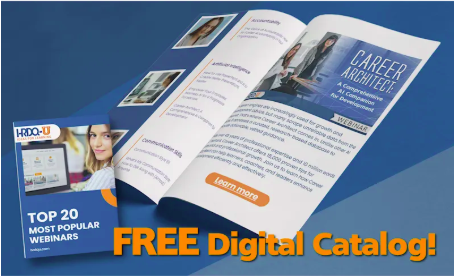
Download our catalog of our top 20 most popular webinars.